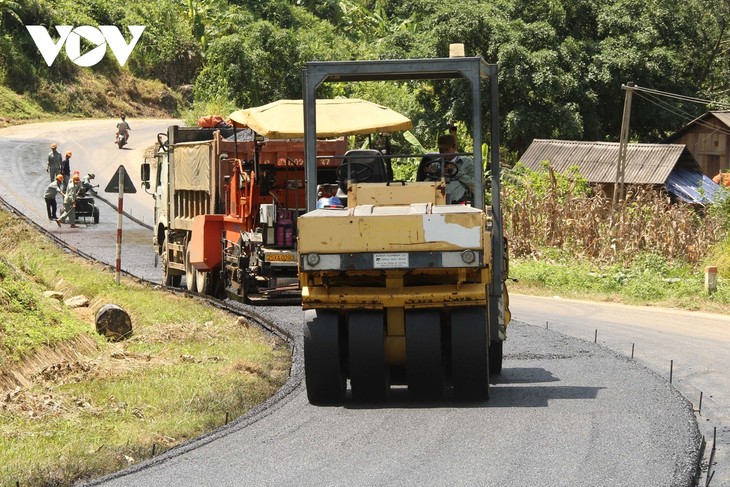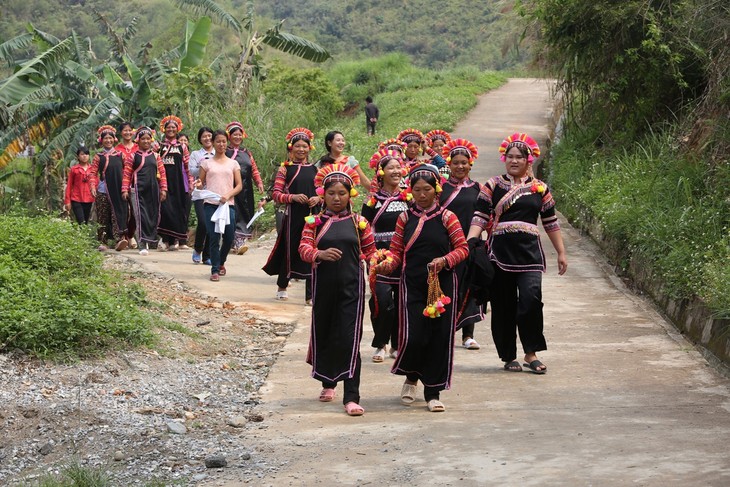(VOVWORLD) - In recent years, Lai Chau has mobilized resources to open and upgrade roads in order to boost the local socio-economic development, improve people’s living standards, and reduce poverty.
 All provincial roads and highways have been asphalted (Photo: VOV) All provincial roads and highways have been asphalted (Photo: VOV) |
Hoi Han hamlet, 3 kilometers from Muong Te district’s downtown, Lai Chau province, once was isolated from other areas. The hamlet was accessible through a small road along the stream. With the Government’s investment, a concrete road was built 7 years ago, attracting many people living on hillsides to come to settle down and set up businesses. Vang Po Xu, Head of Hoi Han hamlet, said: “The concrete road has made transport much easier. We don’t have to walk anymore and can now use trucks to transport agricultural products.”
Muong Te is a remote border district in Lai Chau. Over the past years, the local authorities have invested much in upgrading transport infrastructure. The district has completed the construction of the Ta Pa-Pa U border road and now has 600 kilometers of rural roads. Nguyen Quang Vinh, Head of Muong Te district’s Department of Economics and Infrastructure, said due to rugged mountainous terrain, the local infrastructure can only meet part of basic needs but it was a breakthrough compared to the past. “Thanks to new roads, Muong Te district’s socio-economy has improved remarkably. The district is now more accessible to traders who can now directly purchase agricultural products from local farmers. This has helped reduce poverty and increase local people’s income,” said Vinh.
 Thanks to new roads, Muong Te district’s socio-economy has improved remarkably (Photo: VOV) Thanks to new roads, Muong Te district’s socio-economy has improved remarkably (Photo: VOV) |
Now that all communes in Lai Chau province have concrete road and can be accessible by motorbikes and cars. Last year, the local transport sector repaired and upgraded 14 major roads. Ta Duc Hung, Deputy Head of Lai Chau province’s Department of Transport, said: “The Department of Transport upgraded the road surfaces, and concretized the major roads linking to other areas. So far, all provincial roads and highways have been asphalted.”
In the coming years, Lai Chau province will implement projects to link the province with Noi Bai-Lao Cai-Lai Chau expressway and other border areas. With a coordinated transport infrastructure, the province is confident to realize its goal to become a middle-developed province in the northern mountainous region by 2030.